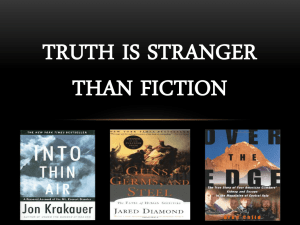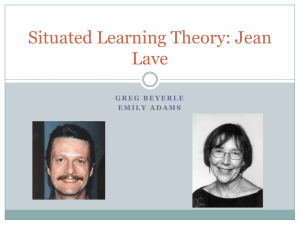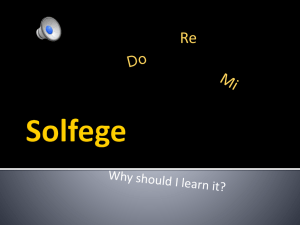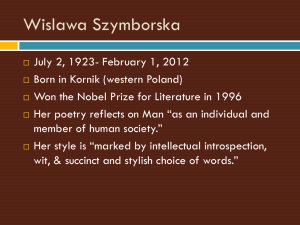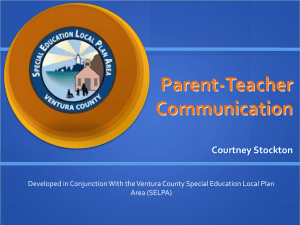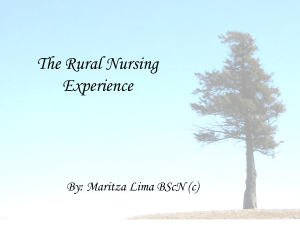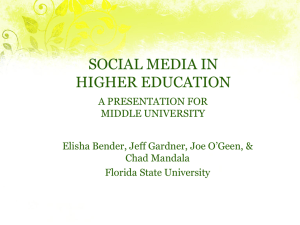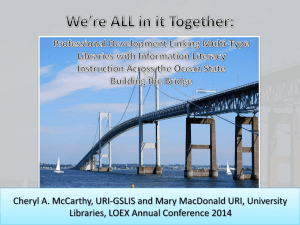Situating Information Literacy within the Disciplines: New
advertisement
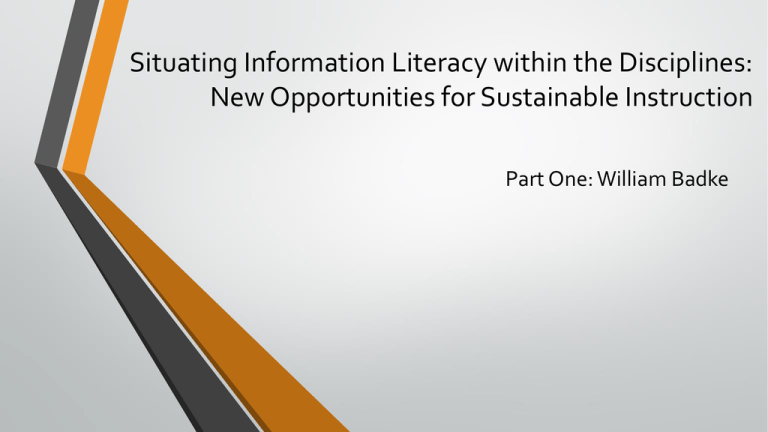
Situating Information Literacy within the Disciplines: New Opportunities for Sustainable Instruction Part One: William Badke Higher education is under stress Society demands skills that are not being found to the expected level in university graduates. Critical thinking Problem solving The able use of information Situated Learning “[Students] need to be exposed to the use of a domain's conceptual tools in authentic activity—to teachers acting as practitioners and using these tools in wrestling with problems of the world.” Brown, J. S., Collins, A. & Duguid, P. (1989), Situated cognition and the culture of learning, Educational Researcher, Vol. 18, no. 1, 34. Situated Learning “The most important task of an undergraduate student is to learn to be a member of the discipline community, to tap into the knowledge and practice embodied in that community.” Nichols, J. T. (2009), The 3 directions: Situated Information literacy. College & Research Libraries, Vol. 70, 528. The Nature of Disciplines Epistemology: What is our knowledge base? Why do we value it? Metanarrative: What is our story? How do we view ourselves? Method: How do we advance our discipline through research? Student Alienation Knowledge is a cheap commodity The professor’s expertise creates a barrier Students need less information dissemination and more invitation to join the academy as participants Student Alienation “To produce graduates filled with facts but inept at solving problems and advancing knowledge is increasingly a ludicrous proposition.” Badke, W. (2013), Teaching research processes for the long haul, Online Searcher, Vol. 37, no. 3, 70. Situated Information Literacy Students are invited into disciplines Students learn how to do the work of disciplinarians Situated Information Literacy Students acquire research ability in an environment of planned, deliberate mentoring Content and process get equal billing Professor’s expertise is more important than professor’s mere knowledge Situated Information Literacy Formative assessment becomes virtually universal Close reading of existing research, discussion of the nature of the discipline, and faceted research take equal billing with content Librarians and faculty work together in designing curriculum, wording assignments, and determining rubrics Situating Information Literacy within the Disciplines: New Opportunities for Sustainable Instruction Part Two: Robert Farrell Which Brings us to the CUNY Model + = [If You Can Read This You Are Within Range]. (n.d.). [Illustration]. Retrieved from http://suptg.thisisnotatrueending.com/archive/9860177/images/1274061377367.jpg Lohr, N. (2010). Generic Luncheon Loaf. [Photograph]. Retrieved from http://www.flickr.com/photos/sugarpants/4369289730/ Threshold Concept Model is Useful …But Only Opens the Door to Further Disciplinary Learning “Miyako opening a door.” https://www.flickr.com/photos/htakashi/8393574815/ We Need to Paint a Disciplinary Picture Of the Information Literate Student UMC Child Painting. (2011). [Photograph]. Retrieved from http://uniquemindcare.com/wp-content/uploads/2011/03/UMC-Child-Painting.jpg Through Focus Group Conversations With Disciplinary Faculty (facilitated by us) Then Work With Disciplinary Faculty To Design Learning Opportunities (scaffolded experiences over the disciplinary curriculum …many may already be in place) Sequence from Seed to Baby Plant. (n.d.). [Photograph]. Retrieved from http://www.istockphoto.com/stock-photo-5647021-sequence-from-seedling-to-baby-plant.php That Allow Students to Become Participants in New Worlds Griffen, B. Facebook Networks (Females). (2012). [Illustration]. Retrieved from http://griffsgraphs.com/2012/07/02/a-facebook-network/ Disciplinary Expertise …is put to work in various landscapes. Three landscapes important to us Academic Workplace Everyday Life (See the Guidelines; See also the work of Anne Lloyd) Surely You GeST! Three windows through which to look at and describe what, as a whole, comprises information literate behavior. Generic Situated Transformative/ Critical Lupton and Bruce “Windows on Information Literacy Worlds” (2010) Higgins, D. (2011). Three Windows. [Photograph]. Retrieved from http://del-higgins.com/2011/07/22/three-windows/ Allows us to See “Information Literacy” as… • theoretical construct for isolating certain behaviors from an integrated skilled performance; • something that can only be learned, not “taught;” • only existing in abstraction from actual practice; • a heuristic or tool for discovery in instructional design. …And not separate from situated, embodied, socio-cultural practice Leffler, W.K. (1957). Integrated classroom at Anacostia High School, Washington, D.C. [Photograph]. Retrieved from http://www.loc.gov/pictures/item/2003654359/ 1960s Man In Lab Coat & Goggles Surrounded By Glass Tubing Conducting Scientific Research. (n.d.). [Photograph]. Retrieved from http://www.masterfile.com/stockphotography/image/846-02795367 [Men working in post industrial society]. (n.d.). [Photograph]. Retrieved from http://media.platypus1917.org/wpcontent/uploads/2012/12/120614045546-labor-force-1-story-top.jpg A WPC Using a Police Telephone. (c.1958). [Photograph]. Retrieved from http://www.portsmouthmuseums.co.uk/colle ctions/collection-a-crime-and-justice.html Kitchen staff with industrial mixers at the White Lunch Cafe. (1950). [Photograph]. Retrieved from http://www.thevisiblecity.ca/eng/enseignessigns/white_lunch_cafeteria [Professor Arnulf Zweig]. (n.d.). [Photograph]. Retrieved from http://alumni.honors.uoregon.edu/content/honors-college-1965-1969 Initial Data from Sociology Department Interviews Initial Data from Sociology Department Interviews Advantages of the CUNY Model Challenges using the CUNY Model More details and bibliography at: http://articulation.commons.gc.cuny.edu
